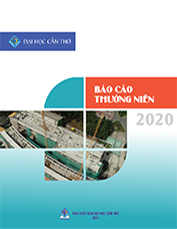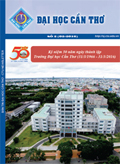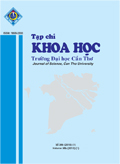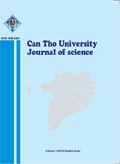Thông tin chung: Ngày nhận bài: 27/04/2020 Ngày nhận bài sửa: 14/06/2020 Ngày duyệt đăng: 28/08/2020 Title: A comparision of using CB-SEM and PLS-SEM for testing measurement model of consumer innovativeness in Ho Chi Minh City Từ khóa: Mô hình đo lường, mô hình cấu trúc, phương trình mô hình cấu trúc, tính đổi mới của người tiêu dùng Keywords: Consumer innovativeness, measurement model, structural equation modeling, structural model | ABSTRACT Structural equation modeling (SEM) has become a popular technique with a dramatic increasing in publications. Two main approaches to estimate structural equation models include covariance-based structural equation modeling (CB-SEM) and partial least squares structural equation modeling (PLS-SEM). The purpose of this study is to compare the testing measurement model results from CB-SEM and PLS-SEM, using a dataset of consumer innovativeness in Ho Chi Minh city. The study shows that consumer innovativeness is measured with four different levels of consumer innovativeness, including innate innovativeness (II), domain-specific innovativeness (DSI), vicarious innovativeness (VI) and behavioral innovativeness (BI). All constructs were found to achieve acceptable reliability, convergent validity, discriminant validity, nomological validity, and model fit criterion. The study also finds that results from CB-SEM and PLS-SEM approaches are likely similar in measurement model and structural model testing; however, PLS-SEM has more advantages in some statistical analysis. TÓM TẮT Mô hình phương trình cấu trúc tuyến tính (SEM) là phương pháp phân tích phổ biến, thể hiện qua nhiều công trình khoa học được công bố. Để thực hiện SEM, có hai hướng tiếp cận bao gồm mô hình phương trình cấu trúc dựa trên hiệp phương sai CB-SEM (covariance-based SEM) và mô hình phương trình cấu trúc dựa trên bình phương tối thiểu từng phần PLS-SEM (partial least squares SEM). Mục đích của nghiên cứu này so sánh kết quả kiểm định mô hình đo lường giữa CB-SEM và PLS-SEM dựa trên bộ dữ liệu khảo sát về tính đổi mới của người tiêu dùng tại thành phố Hồ Chí Minh. Kết quả nghiên cứu cho thấy thang đo tính đổi mới của người tiêu dùng được đo lường qua bốn khái niệm bao gồm tính đổi mới bẩm sinh (II), tính đổi mới theo danh mục sản phẩm (DSI), tính đổi mới lan truyền (VI) và tính đổi mới về hành vi (BI). Các thang đo này đều đạt các tiêu chí về độ tin cậy, giá trị hội tụ, giá trị phân biệt, giá trị lý thuyết và tiêu chí về sự phù hợp của mô hình đo lường. Kết quả kiểm định mô hình đo lường và mô hình cấu trúc cũng cho thấy không có sự khác biệt đáng kể giữa cả hai cách thức CB-SEM và PLS-SEM, tuy nhiên PLS-SEM thể hiện ưu điểm hơn trong một số phân tích thống kê. |






